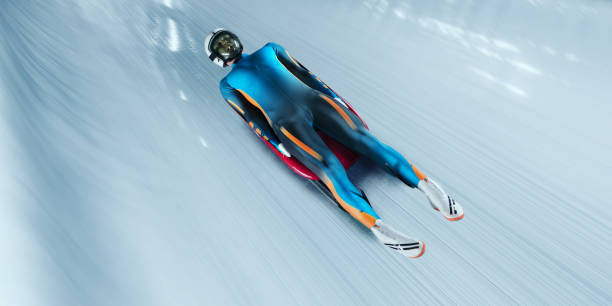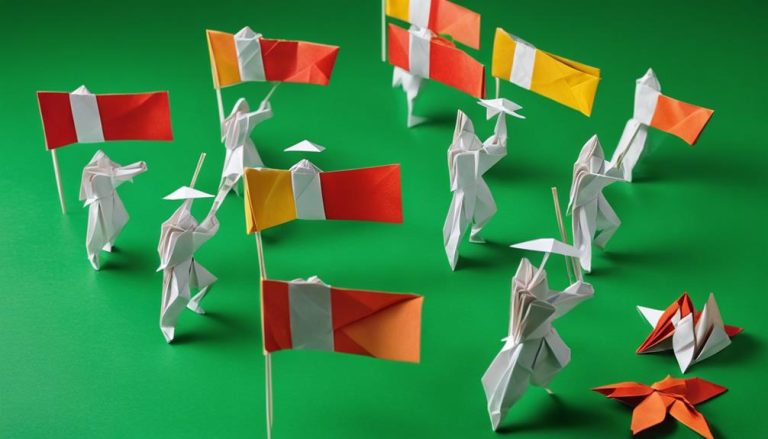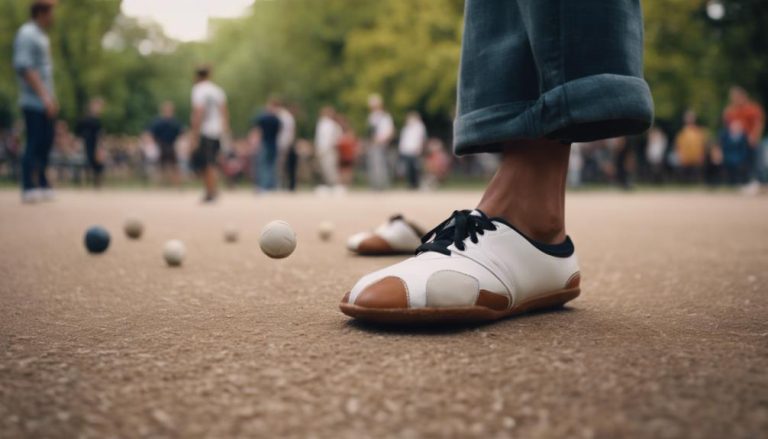General Rules of Kayaking
When it comes to kayaking, the thrill of adventure meets the need for caution. Before you set out on the water, there are key guidelines to keep in mind. From selecting the appropriate kayak to mastering essential paddling techniques, each aspect plays a crucial role in ensuring a safe and enjoyable experience. But what about the lesser-known etiquettes and safety measures that could make all the difference during your kayaking excursions?
Choosing the Right Kayak
When selecting a kayak, it is important to ponder your experience level and intended use to guarantee a safe and enjoyable paddling experience. Let's start with kayak size. The size of your kayak plays a significant role in your overall experience on the water. Longer kayaks provide better tracking and speed, making them ideal for long-distance paddling. On the other hand, shorter kayaks are more maneuverable, perfect for steering through narrow waterways and handling rough waters. Consider where you plan to paddle most frequently to determine the appropriate size for your needs.
Now, let's explore material options. Kayaks come in various materials, each with its own set of advantages and disadvantages. Polyethylene kayaks are durable, affordable, and suitable for beginners. They can handle bumps and scrapes without much damage. Composite kayaks, made from fiberglass or carbon fiber, are lightweight and offer excellent performance on the water. However, they are more expensive and require careful handling to prevent damage. Inflatable kayaks are another option, perfect for easy transport and storage but may not be as sturdy as hard-shell kayaks.
When choosing a kayak, consider your budget, storage options, transportation needs, and the type of paddling you plan to do. By carefully evaluating kayak size and material options, you can select the perfect kayak that suits your preferences and enhances your paddling adventures.
Essential Gear and Equipment
As you gear up for your kayaking adventures, ensuring you have the right equipment is key to a safe and enjoyable experience on the water. Here are some essential gear and equipment you should consider before hitting the waves:
- PFD (Personal Flotation Device): A PFD is essential for your safety on the water. Make sure to choose one that fits you well and is suitable for kayaking activities.
- Paddle: Invest in a high-quality paddle that is the right length and style for your paddling needs. Different types of paddles are suited for various water conditions and kayaking styles.
- Spray Skirt: If you're planning on kayaking in rough waters or cold conditions, a spray skirt can help keep you dry and warm. Look for brands known for their durability and waterproofing.
- Safety Gear: Items like a whistle, a bilge pump, and a first aid kit are essential for any kayaker. Consider reputable brands when purchasing safety gear to ensure reliability in emergencies.
When selecting gear and equipment, remember that different types of kayaking (such as recreational, touring, or whitewater) may require specialized gear. Research reputable brands to find equipment that suits your needs and budget. Prioritize safety and comfort to make the most of your kayaking adventures.
Understanding Water Conditions
To navigate safely and effectively while kayaking, understanding different water conditions is essential for your overall experience. Reading currents and waves is vital to anticipate how the water will behave and plan your route accordingly. Currents can vary in strength and direction, affecting your kayaking speed and direction. Waves can be influenced by factors such as wind speed and distance traveled, so being able to read them will help you navigate through them smoothly.
Weather and tides play a significant role in the water conditions you'll encounter. Weather conditions like wind can create waves and affect the difficulty of your kayaking trip. Tides, the rise and fall of sea levels caused by gravitational forces, can impact the speed and direction of currents. Understanding how these factors influence the water will help you plan your kayaking journey effectively.
Proper Paddling Techniques
Mastering proper paddling techniques is crucial for maximizing your efficiency and enjoyment while kayaking. Here are four key tips to help you improve your paddling skills:
- Forward Stroke – The forward stroke is the most frequently used paddling technique. To execute it effectively, sit up straight, engage your core muscles, and reach forward with the paddle blade, immersing it fully in the water. Use your torso rotation to power the stroke, pulling the blade back alongside the kayak before lifting it out for the next stroke.
- Edging Technique – Edging your kayak involves tilting it slightly to one side by shifting your body weight. This technique helps you navigate tight turns with precision and control. Practice edging by leaning your body and kayak in the direction you want to turn while maintaining balance and stability.
- Paddle Placement – Pay attention to where you place your paddle in the water. Aim for a vertical paddle shaft to minimize resistance and maximize efficiency. Keep the paddle close to the kayak to reduce strain on your arms and shoulders.
- Consistent Practice – Like any skill, paddling proficiency comes with practice. Regularly hone your paddling techniques in various conditions to build confidence and improve your overall kayaking experience.
Navigational Tips and Tricks
When paddling while kayaking, always keep a keen eye on your surroundings for potential obstacles and current changes in the water. To enhance your paddling efficiency and optimize your route planning, consider the following navigational tips and tricks:
| Navigational Tips | Benefits |
|---|---|
| Plan your route ahead of time | Helps avoid getting lost and maximizes exploration opportunities |
| Utilize landmarks for navigation | Provides visual cues for direction and distance |
| Adjust your paddling technique based on wind and currents | Enhances efficiency and saves energy |
Safety Measures and Protocols
As you venture out on your kayaking excursions, guaranteeing your safety through proper measures and protocols is paramount for a smooth and enjoyable experience. Here are some essential safety tips to keep in mind:
- Wear Your Personal Flotation Device (PFD): Always wear a properly fitting PFD when kayaking to guarantee your safety in case of capsizing or any emergency situation.
- Learn Emergency Procedures: Familiarize yourself with basic emergency procedures such as how to re-enter your kayak after capsizing, signaling for help, and knowing when to call for assistance.
- Practice Rescue Techniques: Take the time to practice rescue techniques like assisted rescues and self-rescues with a partner before heading out on more challenging waters.
- Stay Informed and Prepared: Check weather conditions, water levels, and tide schedules before your trip. Carry essential safety equipment such as a whistle, a bilge pump, and a first aid kit.
Etiquette on the Water
To guarantee a harmonious experience for all kayakers, it is important to comprehend and adhere to the etiquette guidelines while on the water. Proper communication is key to ensuring everyone's safety and enjoyment. When passing other kayakers, make your intentions clear by using hand signals or verbal cues. A friendly 'on your left' or a raised hand to signal stopping can prevent accidents and promote a positive atmosphere on the water.
Environmental awareness is another important aspect of kayaking etiquette. Respect the natural habitat by avoiding disturbing wildlife, keeping noise levels to a minimum, and refraining from littering. Paddling quietly not only enhances the serenity of the experience but also minimizes your impact on the environment.
Be mindful of your surroundings and other watercraft. Yield to larger vessels and give right of way to boats with restricted maneuverability. Stay aware of your position in relation to others to prevent collisions and maintain a smooth paddling experience for everyone.
Frequently Asked Questions
Can Kayaking Help Improve My Physical Fitness and Overall Health?
Kayaking can totally transform your physical fitness and health. It amps up endurance, boosts strength and flexibility, aids weight loss, enhances cardiovascular health, and uplifts mental well-being. Get ready to paddle towards a better you!
Are There Any Specific Rules or Regulations Regarding Kayaking in Protected Wildlife Areas?
When kayaking in protected wildlife areas, follow regulations to preserve nature. Be mindful of the environmental impact, respecting restrictions in place. Safeguarding wildlife habitats is essential, so paddle responsibly and enjoy the beauty around you.
What Are Some Common Mistakes That Beginners Make When Learning How to Kayak?
When learning to kayak, common mistakes include improper paddle grip, leaning too far back or forward, and not wearing a life jacket. Focus on proper techniques such as mastering strokes, maintaining balance, and staying safe.
How Can I Properly Maintain and Store My Kayak to Ensure Its Longevity?
To maintain your kayak's longevity, clean it properly after each use. Store it in a dry, shaded area away from direct sunlight. Regularly check for any damages and perform maintenance tasks as needed. Take care of your kayak for lasting adventures.
Are There Any Recommended Resources or Organizations for Kayakers Looking to Connect With a Community or Find Group Outings?
Looking to connect with fellow kayakers and join group paddling adventures? Check out local kayak clubs or online forums. They offer community events and group outings, perfect for meeting new friends and exploring together.






